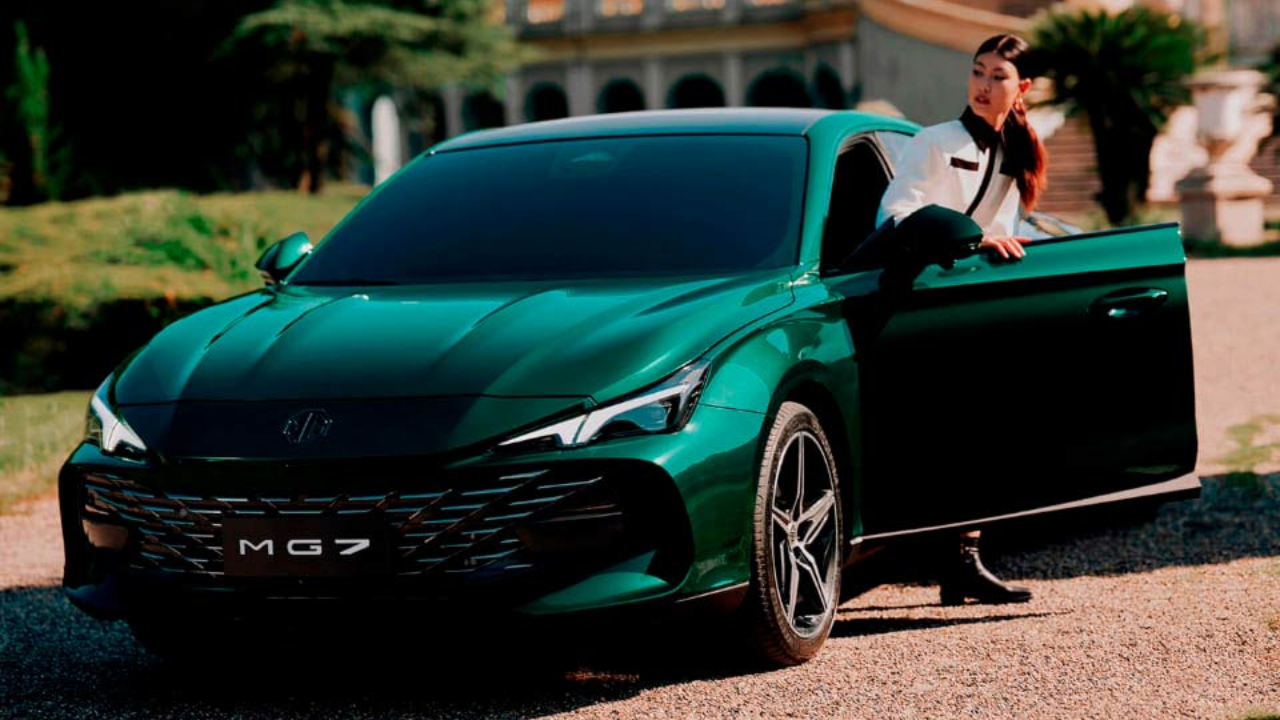The automotive industry is a battleground where brands vie for dominance, and the midsize sedan segment remains a fiercely contested arena. Toyota’s Camry has long been a titan in this space, celebrated for its reliability, fuel efficiency, and widespread appeal. However, a new contender is stepping into the ring: the 2026 MG 7, a sleek and ambitious offering from the Chinese-British automaker MG (Morris Garages). With bold styling, advanced technology, and competitive pricing, the MG 7 aims to challenge the Camry’s stronghold. Yet, despite its strengths, the MG 7 misses one critical advantage that Toyota has mastered: a hybrid powertrain. This article explores how the 2026 MG 7 stacks up against the Camry, why it’s targeting the same market, and where it falls short.
The Midsize Sedan Market: A Competitive Landscape
Midsize sedans are a staple for families, professionals, and value-conscious buyers seeking a balance of comfort, efficiency, and practicality. The Toyota Camry has dominated this segment for decades, with nearly 2.4 million units sold in North America between April 2021 and March 2022, making it one of Toyota’s top performers. Its reputation for durability, safety, and fuel efficiency—bolstered by its hybrid-only lineup for 2025 and beyond—has cemented its place as a go-to choice.

Enter the 2026 MG 7, a vehicle designed to disrupt this status quo. MG, owned by SAIC Motor, has been making waves with its affordable yet feature-rich vehicles. The MG 7 targets the same demographic as the Camry: middle-aged consumers (30-50 years), families, and young executives who prioritize value, reliability, and modern technology. However, while the MG 7 brings a compelling package, it lacks the hybrid technology that has become a cornerstone of Toyota’s appeal in an era of rising fuel costs and environmental consciousness.
MG 7: A Bold Contender
The 2026 MG 7 is a stylish midsize sedan that blends European design flair with Chinese manufacturing efficiency. It boasts a sleek exterior with a low-slung profile, a bold front grille, and sharp LED headlights, giving it a more aggressive look than the Camry’s refined, understated design. Inside, the MG 7 offers a premium cabin with a 12.3-inch touchscreen infotainment system, wireless Apple CarPlay and Android Auto, and a suite of advanced driver-assistance systems (ADAS) like adaptive cruise control and lane-keeping assist.
Under the hood, the MG 7 is powered by a range of gasoline engines, including a 1.5-liter turbocharged four-cylinder producing 185 horsepower and a 2.0-liter turbo option with 250 horsepower. These engines are paired with a smooth-shifting 7-speed dual-clutch transmission, offering a sporty driving experience. The MG 7’s performance is a key selling point, appealing to buyers who crave a bit more excitement than the Camry’s calm, composed ride.
Pricing is another area where the MG 7 aims to undercut the Camry. While the 2025 Camry starts at $29,795 for the base LE trim, the MG 7 is expected to start around $25,000, making it an attractive option for budget-conscious buyers. This competitive pricing aligns with MG’s strategy to capture market share in regions like North America, Europe, and Asia, where the Camry enjoys strong sales.
Toyota Camry: The Hybrid Benchmark
The 2025 and 2026 Toyota Camry models are exclusively hybrid, a bold move that reflects Toyota’s commitment to sustainability and fuel efficiency. The Camry’s fifth-generation Toyota Hybrid System (THS 5) pairs a 2.5-liter four-cylinder engine with electric motors, delivering 225 horsepower for front-wheel-drive models and 232 horsepower for all-wheel-drive variants. This powertrain achieves an EPA-estimated 44-51 MPG combined, a figure that resonates with environmentally conscious consumers and those looking to save on fuel costs.
Beyond efficiency, the Camry offers a refined driving experience, a spacious interior, and a reputation for bulletproof reliability. Its resale value is among the best in the class, with owners typically keeping their Camrys for 9.5 years on average, second only to the Ford Explorer. The 2026 Camry also introduces the Nightshade Edition, featuring blacked-out exterior elements and a sporty aesthetic, appealing to younger buyers without sacrificing practicality.
Toyota’s safety suite, Toyota Safety Sense 3.0, comes standard, including features like pre-collision detection, pedestrian and cyclist detection, and blind-spot monitoring. These attributes, combined with a starting price that remains competitive, make the Camry a formidable player in the midsize sedan market.
The Crucial Toyota Advantage: Hybrid Technology
While the MG 7 brings a strong case with its design, performance, and pricing, it lacks a hybrid powertrain—a significant gap in today’s market. Toyota’s hybrid technology, pioneered with the Prius and refined in models like the Camry, is a key differentiator. Hybrid vehicles appeal to environmentally conscious consumers and those seeking long-term fuel savings, especially as gas prices fluctuate. In 2023, Toyota invested $7.89 billion in R&D, much of it focused on advancing hybrid and electric vehicle technology, underscoring its commitment to this space.
The MG 7, by contrast, relies solely on gasoline engines. While these engines are efficient and powerful, they can’t match the Camry’s 44-51 MPG or its lower emissions profile. This omission could deter buyers in markets like North America and Europe, where hybrid and electric vehicles are gaining traction. MG has hinted at future electrification plans, but for 2026, the MG 7’s lack of a hybrid option puts it at a disadvantage against the Camry’s eco-friendly appeal.
Feature Comparison: MG 7 vs. Toyota Camry
To better understand how the 2026 MG 7 stacks up against the 2026 Toyota Camry, the following table compares key attributes:
|
Feature |
2026 MG 7 |
2026 Toyota Camry |
|---|---|---|
|
Base Price (USD) |
~$25,000 | $29,795 |
|
Powertrain |
1.5L Turbo (185 hp) or 2.0L Turbo (250 hp) |
2.5L Hybrid (225 hp FWD, 232 hp AWD) |
|
Fuel Economy (MPG) |
~30 MPG combined (estimated) |
44-51 MPG combined |
|
Transmission |
7-speed dual-clutch |
Continuously Variable Transmission (eCVT) |
|
Infotainment |
12.3-inch touchscreen, wireless CarPlay |
8-12.3-inch touchscreen, wireless CarPlay |
|
Safety Features |
Adaptive cruise, lane-keeping, AEB |
Toyota Safety Sense 3.0 (AEB, pedestrian detection, blind-spot monitoring) |
|
Warranty |
5 years/60,000 miles (estimated) |
3 years/36,000 miles, 5 years/60,000 miles (hybrid components) |
|
Resale Value |
TBD (new market entrant) |
High (9.5 years average ownership) |
This table highlights the MG 7’s edge in pricing and performance but underscores the Camry’s superiority in fuel efficiency and resale value. The Camry’s hybrid system and established brand loyalty give it a clear advantage for buyers prioritizing long-term value and sustainability.
Market Positioning and Consumer Appeal
The MG 7 targets a similar audience to the Camry: families, young professionals, and value-driven buyers aged 30-50. Its lower price point and sporty design aim to attract younger buyers or those new to the MG brand, particularly in markets where brand recognition is still growing. MG’s marketing emphasizes style, technology, and affordability, positioning the MG 7 as a fresh alternative to established players like Toyota.
Toyota, however, leverages its reputation for reliability and sustainability. The Camry appeals to conservative buyers who value dependability and low ownership costs. Its hybrid-only lineup aligns with Toyota’s “Beyond Zero” vision, targeting environmentally conscious consumers who want to reduce their carbon footprint. The Camry’s Nightshade Edition adds a sporty flair to attract younger buyers, but its core appeal remains its practicality and proven track record.
Challenges for the MG 7
The MG 7 faces several hurdles in challenging the Camry. First, MG’s brand recognition in markets like North America lags behind Toyota’s global dominance. Toyota’s long-standing reputation for quality and durability resonates with buyers, while MG must prove its reliability over time. Second, the absence of a hybrid powertrain limits the MG 7’s appeal in a market increasingly focused on sustainability. Finally, the Camry’s resale value and extensive dealer network provide a level of trust and accessibility that MG will struggle to match initially.
Opportunities for MG
Despite these challenges, the MG 7 has opportunities to carve out a niche. Its lower price point could attract budget-conscious buyers, especially in emerging markets like Asia and Latin America. The sporty design and powerful engines may appeal to buyers seeking a more dynamic driving experience than the Camry offers. Additionally, MG’s focus on technology, such as its large touchscreen and ADAS features, aligns with the preferences of younger, tech-savvy consumers.
Looking Ahead
The 2026 MG 7 is a bold contender in the midsize sedan segment, offering a compelling mix of style, performance, and value. Its aggressive pricing and modern features make it a viable alternative to the Toyota Camry, particularly for buyers prioritizing affordability and driving dynamics. However, the MG 7’s lack of a hybrid powertrain is a significant drawback in a market where fuel efficiency and environmental concerns are paramount. The Camry’s hybrid-only lineup, proven reliability, and strong resale value give it a crucial edge that MG cannot yet match. As MG continues to expand globally, the 2026 MG 7 represents a promising step—but to truly rival the Camry, it may need to embrace electrification sooner rather than later.

